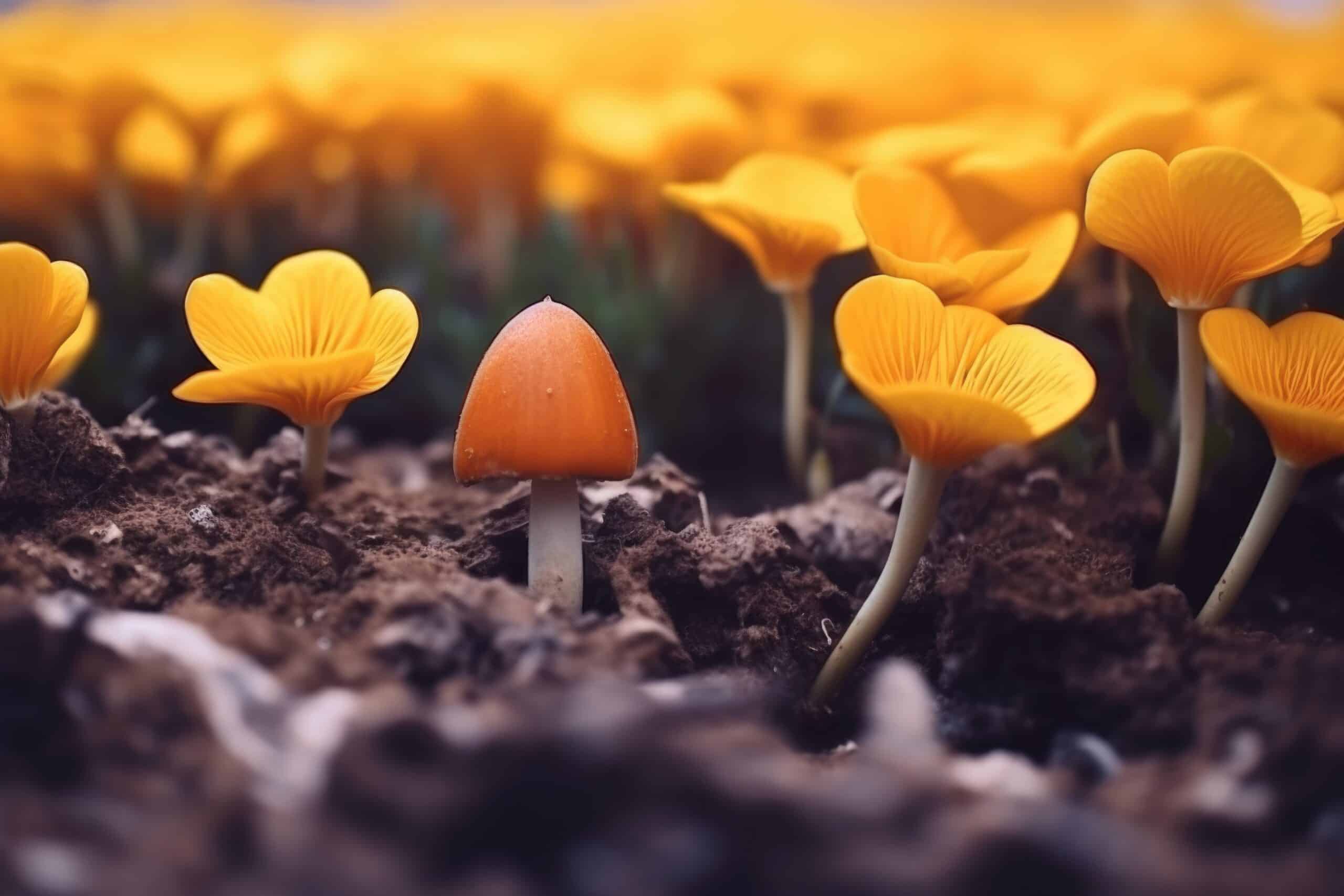How quickly can mushrooms grow under optimal conditions?
Key Takeaways
- Temperature and humidity are crucial factors for successful mushroom cultivation.
- Maintaining the right temperature range (18-22°C or 64-72°F) and humidity levels (80-90% relative humidity) is crucial for optimal growth.
- Other influencing factors include CO2 levels, light conditions, air exchange, substrate treatment, nutrient mix, particle size, substrate moisture, pH value, electrical conductivity, moisture content, light intensity, duration of light exposure, light spectrum, contamination, nutrient availability, and airflow.
When it comes to mushroom cultivation, speed of growth is an important factor to consider. Farmers and hobbyists alike are often curious about how quickly mushrooms can grow under optimal conditions. While the exact growth rate may vary depending on various factors, it is essential to understand the key elements that contribute to the speed of mushroom growth.
Factors Affecting Mushroom Growth
Several factors have a significant impact on the speed at which mushrooms grow. These factors include temperature, humidity, CO2 level, light, air exchange, substrate treatment, nutrient mix of the substrate, particle size, substrate moisture, pH value, electrical conductivity, moisture content, substrate choice, light intensity, duration of light exposure, light spectrum, contamination, nutrient availability, and airflow.
While each factor plays a role, let’s focus on the primary elements that have been consistently highlighted in various sources.
Optimal Temperature and Humidity
Temperature and humidity are crucial factors for successful mushroom cultivation. Different types of mushrooms require specific temperature ranges for optimal growth. According to the information provided, the ideal temperature range for rapid mushroom growth is between 18-22°C (64-72°F).
Humidity is equally important, and maintaining the right levels can significantly impact the growth rate. A relative humidity between 80-90% is considered ideal for mushrooms to thrive.
It’s worth noting that different species of mushrooms may have specific temperature and humidity requirements. For example, oyster mushrooms prefer a temperature range of 75-85°F, while other species may have different preferences.
Other Influencing Factors
While temperature and humidity are primary factors, other elements can also influence the speed of mushroom growth. These include CO2 levels, light conditions, air exchange, substrate treatment, nutrient mix, particle size, substrate moisture, pH value, electrical conductivity, moisture content, light intensity, duration of light exposure, light spectrum, contamination, nutrient availability, and airflow.
CO2 levels need to be managed effectively through proper air exchange to ensure optimal growth. Light conditions, although not necessary for photosynthesis in mushrooms, can influence the growth direction and density of mycelium. Good air circulation is essential to prevent humidity buildup and contamination. Nutrient availability and substrate choice also play a vital role in mushroom growth.
Estimating Growth Rate
While the average growth rate of mushrooms under optimal conditions is not mentioned in the provided text, it is important to understand that the growth rate can vary significantly depending on the mushroom species, environmental conditions, and cultivation techniques. It is advisable to refer to specific guides or consult experts for more precise estimations of growth rates for particular mushroom species.
Conclusion
Under optimal conditions, mushrooms can grow at a relatively fast rate. Temperature, humidity, CO2 levels, light conditions, air exchange, substrate treatment, and other factors all contribute to the speed of growth. Maintaining the right temperature range (18-22°C or 64-72°F) and humidity levels (80-90% relative humidity) is crucial for successful cultivation. However, it is important to note that different mushroom species may have specific requirements, and other influencing factors should also be considered for optimal growth.
Related Websites:
- Rooftop Mushroom Cultivation – Optimal Temperature and Humidity for Successful Mushroom Cultivation
- Improve Mushroom Cultivation – 12 Important Growing Factors for Mushroom Farming
- Atlas Scientific – Factors Affecting Mushroom Cultivation
- Funguy Grow Supply – How to Grow Mushrooms
- Out-Grow – Optimal Conditions for Growing Mushrooms
FAQs:
Q: What factors influence the growth rate of mushrooms?
The growth rate of mushrooms is influenced by several factors, including temperature, humidity, light, and substrate/nutrients. These factors play a crucial role in creating optimal conditions for mushroom growth.
Q: Do mushrooms require light for growth?
While mushrooms do not require light for their initial growth, light plays a role in later stages. Light triggers the development of fruiting bodies, which are the visible part of mushrooms. Therefore, providing the right amount of light can impact the speed of mushroom growth.
Q: What are the different stages of mushroom growth?
Mushroom growth occurs in three main stages: spawn run, pinning, and fruiting. The spawn run stage is when mycelium colonizes the substrate. Pinning is the formation of small mushroom pins, and fruiting is the growth and maturation of mushrooms.
Q: How long does it take for mushrooms to grow?
The average time for mushrooms to grow under optimal conditions is typically around 1-2 weeks. However, the exact timeframe can vary depending on the mushroom species and environmental factors. Regular monitoring throughout the growing process is important to ensure timely harvest.
Q: What is the importance of maintaining optimal conditions for mushroom growth?
Maintaining optimal conditions is crucial for faster mushroom growth. Proper temperature, humidity, light, and nutrient levels ensure favorable conditions for mycelium colonization and fruiting. Failure to maintain these conditions can result in slower growth or even failure to produce mushrooms.






